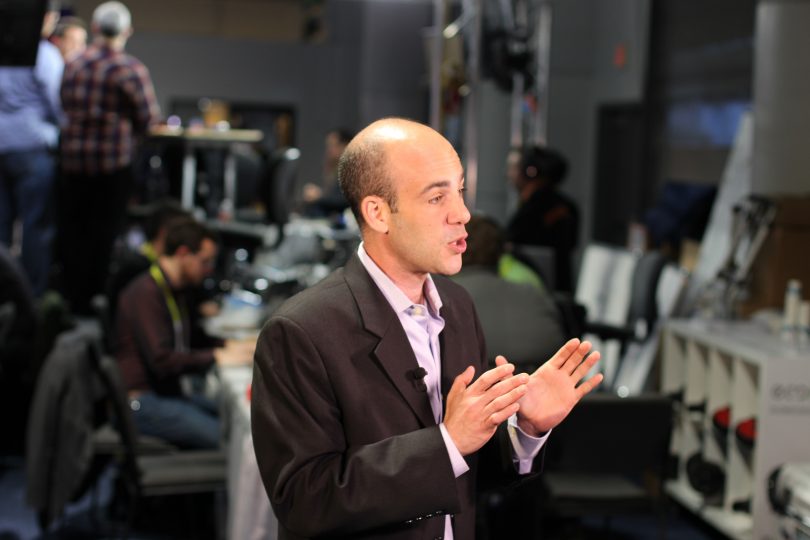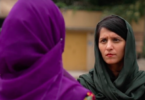Given one of the key tenets of journalistic ethics is objectivity, it is understandable that mainstream media often presents the issue of climate change as a balanced debate.
But the customary pitting of expert against skeptic in climate coverage skews community perceptions and gives credence to views held by a small minority that are unsupported by the current science.
In one corner of the ring we have the global scientific community, in the other, staunch climate deniers – and neither are a homogenous group. Skepticism, after all, is a healthy part of the scientific method, and debates within scientific communities focusing on the nuances of climate issues rage on.
Climate deniers are a far more diverse group, and can be divided into the following categories; those who have a vested interest in the denial of climate change (for political or financial reasons), those who overestimate their abilities of understanding (known as the Dunning-Kruger Effect), and those for whom denial is a psychological defense in response to fear.
While there are a number of motivations for climate denial, climate deniers and their views are outweighed by the overwhelming consensus of the global scientific community on the issue of climate change.
This small minority is only loud because they are given a platform to be.
Striving for balance in coverage has stymied and clouded delivery of information on climate change, with some audiences conflating the equal air time given to the two groups to mean equal importance and legitimacy.
In turn, it is this polarised framing of climate change that places doubt and disengages those in the middle of climate advocates and climate deniers, creating a third category of people left behind in the climate discussion.
Stuck in the middle
Research tells us that most people get their information about the complex and ever-expanding field of climate change science from the news.
Given this complexity, it is essential that the media expresses the urgency of the matter accurately.
The data shows that we have fallen short.
A 2020 survey of news habits around the world revealed that just over one in five news consumers in Australia were found to regard climate change as either “not very serious”, “not serious at all” or “didn’t know”.
An equally alarming statistic from the same survey notes that 15% of Australians said they don’t pay any attention to news about climate change. This is more than twice the global average of 7%.
The lack of engagement in the global dilemma of climate change is concerning because it is an issue that affects humanity now and for generations to come, as well as slowing necessary government action to address the impacts of a changing climate.
It was found in a recent University of Kansas report that a tone of neutrality is more likely to engage audiences than a tone of anger when reporting on climate issues.
When audiences tune in to mainstream news about the climate they are presented with a debate raging between the two poles made up of a widely accepted scientific consensus and a collection of climate denialists.
Audiences see a debate that is divisive, circular and ultimately unproductive.
It’s no wonder given the explosive viewing these debates produce that some people disengage with the information muddied by emotion and are then left behind.
Enter: Weather presenters.
The weather doesn’t have an agenda
Weather reporters are best placed to connect to those who are disengaged from the climate discussion.
There are many spaces for audiences to find climate news, such as distinct news organisation’s dedicated climate reporting teams, or more niche advocacy group coverage of the issue.
But for audiences who are not seeking this news out, or are not likely to be presented with climate content by the algorithms that govern our social media news feeds, weather reports are the perfect impartial spaces to present information about the changing climate.
Weather reports are the least controversial item in a usual news bulletin. By extension, weather reporters are seen as neutral and trustworthy by their communities, and research confirms this.
Weather presenters are also on board to deliver the message. In 2017 The Monash Climate Change Communication Research Hub (MCCCRH) surveyed presenters and found 71% of them said they would be comfortable using climate graphics in their reporting.
In fact, 97% of respondents believed the climate is changing, that viewers had either “strong trust” or “moderate trust” in them as a reliable source of weather information, and finally, thought their audiences would be interested in learning about the impacts of climate change.
Fast forward to 2021, and the MCCCRH’s flagship program Climate Communicators which works with weather reporters to create and utilise “simple, long-term climate graphics” in their weather bulletins that highlight the adverse impacts of climate change to the communities that they reach.
This is a step towards connecting to people who have become disengaged or distrustful because of the mainstream media’s polarised and damaging coverage of the issue.
The weather is reported each day and night, and in turn the climate data “reaches hundreds of thousands of people” who would otherwise be unreachable.
Featured image: A stock image of a reporter in a newsroom, facing the side and speaking with two hands raised at his chest.






I never thought about the role of weather presenters in delivering this news. Who knew Rebecca Judd and Paul Higgins were so powerful!
I believe the research, given when you want to make neutral conversation you talk about the weather.
I also find people in Melbourne should have implicit issues with trusting the weather report. Melbourne has that four seasons in a day attitude.
Very thought-provoking article Ellie.
Two points I took away were:
1. The manipulation of scale in the media
Even though climate deniers are outweighed in their views, they are able to exacerbate their voice beyond their legitimate presence. This is of course, as you stated, because they are given a platform to amplify their voice – at the cost of urgent climate action.
2. Tone Neutrality & Weather Reporting
I found it very interesting how you addressed the correlation between neutral reporting and weather presenters as a viable pathway for engaging audiences on climate change. Quite enlightening on how we could be seeing climate graphics incorporated into our daily weather updates!
I think you raise a great point that weather presenters could pave the way for reporting on climate change solely as scientific fact. Ultimately, reporting on climate change within an objective occurrence ie the weather could reduce perceptions that it is an ‘affair’ or ‘political issue’ to be debated.
Weather presenters all use the same data from the Bureau of Meteorology to give us our forecasts for the week. I wouldn’t think it’d be too difficult for them to access that very same source for historical data in order to integrate graphics into a weather bulletin and educate audiences on climate change in the process.
Hi Ellie,
What a great idea.
Weather reporters are in a unique position, their information is relevant and they also have an unusually good platform to engage.
I wonder how this would be received by the public/weather reporters?
I also wonder why weather reporters have steered clear from this?
Perhaps, fear of backlash from straying onto controversial territory.
Great perspective on the way climate change is covered within the media, El! I’ve never really considered this view but the trust viewers have in weather presenters combined with the increased potential of them watching a full weather report, compared to a segment that was focussed on climate change, has potential to educate a whole audience group who may not normally be exposed (of their own choice) to environmental issues. However, I do agree with Matt, Melburnians may struggle with trust due to its unpredictable weather, but that is more Melbourne’s fault rather than the weather reporters!
Interesting to see the important role weather presenters can play to help deliver messages about climate change to news audiences. Is it enough though to persuade the obstinate disbelievers? I’m certain those who have vested interests in fossil fuels will simply disregard what meteorologists say.
Once again, I do wonder if solutions-based journalism could be part of the answer to this problem. Perhaps rather than presenting news riddled with the negative impacts of climate change, we can produce stories that reveal what everyday people are doing to combat its effects and remind audiences it’s not all doom and gloom.